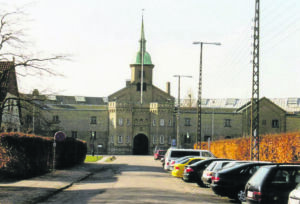News
Penal Envy: Globally admired for its education and rehabilitation of prisoners
This article is more than 10 years old.
Despite their comfortable surroundings, the only inmates who want to return are homeless or addicts

The four-star Zealand open prison blends in seamlessly with its splendid surroundings (photo: Steffen M)
As the old joke goes, Danish prisons are more comfortable than eastern European hotels, and there’s a degree of truth in that.
But there’s also a good reason, as the statistics show Danish prisoners are far less likely to reoffend. According to the Danish Prison and Probation Service (PPS), only Norway, the undisputed world leader in five-star prisons, has a lower rate of recidivism – 20 percent compared to Denmark’s 28 and the global average of 50.
At the heart of the rehabilitation program at Danish prisons is their focus on recreating the conditions of outside life in a bid to eliminate the harmful side-effects of exposure to the enclosed environment of traditional prisons.
Value for money
While it is true that countries like Denmark spend more on the rehabilitation of their prisoners, their overall spending is not significantly more than other Western countries. For example, while Denmark spends 497,495kr per year on each inmate, the UK still manages to spend 405,000kr per prisoner.
And given the success of the rehabilitation, it is ultimately money that is better spent, according to Lis Vinther, a retired prison guard who today works as a volunteer at the Prison Museum at Vester Fængsel, the biggest remand centre in Denmark.
“Most of the prisoners don’t have their compulsory school-leaving examinations, which would raise their chances at getting a job. In prison they have the opportunity to study for these exams and finally pass them,” she contended.
“A lot of times I heard them proudly say ‘I didn’t know I could do this’ and walk out the gate and not come back. We had a girl who took her IT certificate, broke up with her felon boyfriend and opened up a computer business – he came back, but I’ve never seen her since.”
The prisoners are offered a wide range of educations and vocational training, and through the involvement of local businesses, they are assisted in their integration into the job market, which often leads to full-time employment once they leave prison.
Repeat offenders
However, the comfortable conditions can backfire, concedes Vinther, as the inmates who are most likely to return – homeless and addicts mostly – tend to regard the prison as a hotel at which they can “scrub up and get a hot meal”.
“They’re in for a couple of months – you often see the same faces,” she said.
“Eventually they end up on the street again, and then you see them in for petty crime again.”
But there is no significant influx of immigrants, either serving time or among the repeat offenders, despite the politicians’ tendency to point fingers. Some 37 percent of all inmates have non-Danish ethnic backgrounds, but there are no figures on their nationality.
“Besides, violent criminals are extradited to their home countries,” contended a source from the PPS.
“The truth is that political parties will say anything.”
Over the fence
Despite the success rate of rehabilitating prisoners, the media and politicians are quick to pour scorn on the comfortable conditions. A recent report revealed how 1,931 smartphones were smuggled into open prisons in 2014, mostly by being thrown over the fence.
“There is little that can be done, since surveillance is difficult in open prisons and prisoners can walk freely around the premises,” explained Vinther.
Nevertheless, prisoners are allowed to use mobile phones, providing they do so in their cells and pay for their own bills. While their communication is not monitored, they do not have internet access.
Drug use low
Drug-use is another issue that attracts criticism. However, the numbers are not that high. Out of 40,000 random tests taken every year, only 8 percent are positive, of which 90 percent are related to cannabis. Most of the drugs tend to be brought in by visitors or the guards.
There is a good incentive for not taking drugs, as a failed test is punishable by fines, an extended sentence, or solitary confinement – although contrary to the impression you might have from TV, secluded prisoners can request a TV set in their cell.
“The inmates who test positive for drugs don’t tend to be eligible for early release or probation,” confirmed Vinther.
Jailbreak kings
Nevertheless, however comfortable the system might appear, Danish prisoners are the jailbreak kings of Europe. European Council statistics reveal that from 2007-2011 there were on average 35.8 escapes from prison per 10,000 inmates. In contrast, the likes of Italy (1.5) Germany (1.6) and Spain (1.7) averaged less than two.
There were 68 escapes from open prisons in 2013, which just goes to show that for every inmate happy to scrub up and enjoy a free lunch, there’s another one who can’t wait to abscond over the prison walls.










































